- Register
- Log in to Tune-In
- Wishlist (0)
-
Shopping cart
(0)
You have no items in your shopping cart.
Beatles News
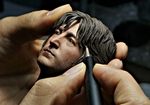
Somewhere along the line, over the course of a half dozen or so moves, I mysteriously lost my 20-inch-tall cloth John Lennon doll.
Granted, the level of detail wasn’t particularly good: I would place it halfway between the Saturday morning Beatles cartoon and Casper the Friendly Ghost. But it was still recognizably John Lennon, thanks in large part to the inclusion of a plastic Rickenbacker guitar, as well as the fact that very few musicians reach that level of mass-produced stuffed effigy. In fact, those late-’80s “Beatles Forever” dolls were the only rock ‘n’ roll collectibles offered by Applause, a since-bankrupted novelty company that was better known for its tricycle-riding Curious George and a line of unremarkable Muppet dolls.
Source: Bill Forman
details
The recently knighted Sir Ringo Starr has announced plans for this year’s tenth anniversary Peace & Love celebration on his birthday on 7 July.
Ringo turns 78 on that day, and will mark the anniversary of the initial 2008 event (which took place in front of the Hard Rock Café in Chicago) by appearing at the Hard Rock in Nice, France, during his European tour with his All-Starr Band. The idea remains the same: to invite his fans to express the phrase “peace and love” in speech, thought and by posting #peaceandlove, and to generate a wave of positivity that spans the globe.
The former Beatle has also unveiled the new video for ‘Give More Love,’ the title song from his 2017 album. Directed by Brent Carpenter, the clip features photos from fans depicting peace, love and kindness, selected from those submitted in a Give More Love contest. Ringo and the All-Starr Band’s summer tour begins on 2 June in Atlantic City and runs until 11 July.
Source: Paul Sexton/udiscovermusic.com
details
Around that time, she grew close to George’s friend and singer Eric Clapton, who had made it known he had strong feelings for Pattie at the time. Her dedication to her husband meant she didn’t act on it, and that led to Clapton’s highly publicised battle with drugs and alcohol, before he eventually sought treatment and recovered around 1974.
“I realised I felt something but I tried to keep it under wraps. Things were so hard and difficult for George, I didn’t want to add to his anxiety about everything. It was very, very difficult.”
By the time Clapton was out of rehab, Pattie’s marriage to George had hit rock bottom, and he had embarked on an affair with Ringo Starr’s former wife Maureen.
Source: startsat60.com
details
It won’t generate the same amount of publicity as the 50th anniversary of The Beatles’ Sgt. Pepper’s Lonely Hearts Club Band did, last year. But this year marks the 50th anniversary of the double album The Beatles — commonly referred to as The White Album, because of its cover. And Monmouth University in West Long Branch will host an academic symposium on the album, Nov. 8-11.
Beatles historian Mark Lewisohn will be the keynote speaker, and the symposium will have the theme of “Producing an Enigma for the Ages.”
Source: JAY LUSTIG/njarts.net
details
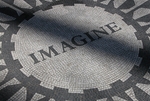
The Imagine mosiac at Strawberry Field in Central Park dedicated to the late John Lennon, who lived across the street in the Dakota at Central Park West and 72nd Street in New York City.
Some 20 students enrolled in the Penn State Berks Beatles honors course turned into day trippers on Sunday, April 8, traveling to New York City for a walking tour of Fab Four historic points "here, there and everywhere"; a presentation by one of the world’s leading Beatles experts and enthusiasts; and a visit to the New York Public Library’s current 1960s U.S. history and culture exhibit.
Taught since 2016 by Thomas Lynn, associate professor of English, the course INART 205: Introducing the Beatles offers undergraduates a detailed overview of the music and lives of John Lennon, Paul McCartney, George Harrison and Ringo Starr, and their impact on the world.
Source: Alan Shirk/news.psu.edu
details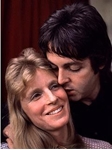
Paul and Linda McCartney in 1973; Michael Putland/Getty ImagesYou might have missed it, but Paul McCartney took a moment Tuesday to remember his late wife, Linda, on the 20th anniversary of her passing.
McCartney posted a color photo of Linda on his Twitter and Instagram, one that appears to have been taken in the early 1970s. Linda's wearing a sweater, with her face in profile, slightly upraised and presented against a sunny blue sky, her hair catching the light like a halo.
"Remembering Linda with love today," McCartney writes. "Beautiful memories."
Paul met Linda Eastman in May of 1967 in London, when she was a 25-year-old photographer. They were married March 12, 1969 and remained nearly inseparable until Linda's death from cancer on April 17, 1998.
Source: wjbdradio.com
details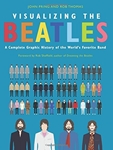
“As designers, we wondered what it would look like to visualize The Beatles and chart their story–the evolution of their music, style and characters–through a series of graphics,” write John Pring and Rob Thomas, lifelong friends and authors of Visualizing The Beatles, coming May 1 in the U.S. from Dey Street Books. (The book was released in the U.K. in 2016 by Orphans Publishing.)
And so they have, with their magical “history” tour of the Beatles career, arranged chronologically beginning with the band’s pre-Beatles days through to Abbey Road and Let It Be.
The book also takes welcome detours with pages devoted to such topics as “Press Conference Humor,” “Style Through the Years,” “Fab Four Memorabilia Sales,” “Hairstyles Over the Years,” and so on.
Source: Best Classic Bands Staff/bestclassicbands.com
details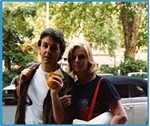
It is 20 years ago today that Linda McCartney passed away. I remember that day very well. I had met Linda on quite a few occasions over the years, and always found her to be very nice. She was certainly the love of Paul’s life, and a very devoted mother.
She was diagnosed with breast cancer in 1995, and pretty much disappeared from public life to fight this horrible disease. In 1997, she appeared with Paul at the premiere of ‘Standing Stone’ at the Albert Hall. Although she had a very different hair style, she looked healthy, and it was wonderful to see her again.
She was making public appearances up until a couple of weeks before her passing, one of the last at Stella’s fashion show in Paris.
The news of Linda’s passing didn’t break in the UK until the early hours of April 18th. I was running the London Beatles Fanclub at the time, as was rung up by CNN for a comment. I didn’t know what to say, as it was such a shock. I thought Linda was winning her battle. My wife, Esther, was going through her own battle with breast cancer at the time, and I suppose we both thought that if Linda couldn’t beat it, what chance did we have? Esther passed away in December 20 details

Drummer Pete Best was sacked from The Beatles on the cusp of them achieving fame, but he hasn't allowed himself to grow bitter
Losing a job you love is a challenge at any time, but losing a high-profile place in the biggest band in the world just as they were on the verge of mega-stardom has to be a particularly savage blow. This happened to Pete Best, who was sacked from The Beatles after two years in 1962. While it was devastating to the then 21-year-old man, Pete speaks without bitterness about the experience.
"The challenge in my life is proving that a catastrophe can happen to you, but if you're strong in character and determined enough, you can overcome it," he says. "I'd like to think people could use my experiences as motivation for themselves."
Source: independent.ie
details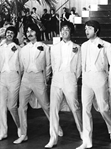
One of Magical Mystery Tour’s most memorable sequences remains the ending, when the Beatles jog down a staircase in all white tuxedos, surrounded by an assortment of women in ballgowns, others in military garb, and more. Paul McCartney’s grin and exaggerated dance moves illustrate how much he enjoyed filming the scene, perhaps because the four were dancing to one of his own compositions: “Your Mother Should Know,” a track written specifically for a big production number.
In addition, the song pays tribute to his father’s music hall background as well as his family’s deep love for the genre. As McCartney told biographer Barry Miles in Many Years from Now, he envisioned a Busby Berkeley-style number while writing the song. He wrote it at his Cavendish Avenue home on a harmonium.
Source: Kit O'Toole/somethingelsereviews.com
details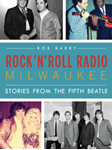
If not for some good advice he received, Milwaukee DJ Bob Barry could have gone down in history as the guy who turned down the Beatles.
It's one of many stories he tells in his new memoir "Rock 'n' Roll Radio Milwaukee: Stories From the Fifth Beatle" (The History Press). He'll talk about the book and his adventures Wednesday at Milwaukee's Boswell Books.
In 1964, Barry was one of Milwaukee's best-known radio voices, a hard worker who took as many emcee and introducing gigs as he could, from CYO sock hops to the Dave Clark Five. These were all paid appearances.
When a promoter called to ask him to emcee the Beatles' Sept. 4, 1964, concert in Milwaukee, Barry asked what it paid. When told there was no budget to pay him, Barry declined the offer.
When he filled in WOKY music director Arline Quier about the call, she told him he "was crazy and to call him back immediately.
Source: Jim Higgins, Milwaukee Journal Sentinel
details

Liverpool's world famous Cavern Club is to become the centerpiece of an official Beatles Quarter to develop its global tourism appeal, the city's mayor announced Friday.
Mathew Street where the club is located at, famed for the rise of the Beatles pop group, is already a mecca for thousands of fans.
Mayor Joe Anderson is to ask the city cabinet to back a masterplan to attract new investment to the area to attract more tourists and fans to the area. It will also generate a more diverse mix of complimentary uses of buildings in the Mathew Street area that operate 24 hours a day.
The mayor's strategy will give the city council control over the future use of buildings in the quarter to attract new investment to build on Beatles heritage tourism which already earns the city nearly 130 million U.S. dollars a year.
A recent economic impact report found the Beatles related industry has been growing at up to 15 percent a year following the city's year as European Capital of Culture in 2008.
Source: Xinhua
details
Hit recording artist Ed Sheeran is poised to make a more significant jump into the acting world, and the project couldn’t be more perfect. The Daily Mail first reported and Deadline confirmed that Sheeran is in talks to join the cast of Oscar-winning Slumdog Millionaire filmmaker Danny Boyle’s upcoming musical comedy from Working Title. The script for the untitled feature hails from Love Actually and About Time screenwriter Richard Curtis, and while the plot has been kept under wraps, The Daily Mail has some intriguing story details, assuming they’re true: It’s the story of a man who wakes up one day to discover he’s the only person in the world who remembers the songs of The Beatles.
Source: Christina Radish/collider.com
details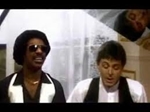
If these classic songs were released today, it would almost certainly ignite a scandal.Mick Jagger, left, and Ron Wood of the Rolling Stones perform in Tampa in 1994. Some of the English rockers' songs contain lyrics that would likely be frowned upon today.
There's nothing like hearing a song come on the radio or flicker across a Spotify playlist that you haven't encountered in a while, and realizing, "Was this song always this offensive?"
The answer: Yes, it probably was. Standards have changed quite a bit in terms of what references the culture at large deems offensive in its hit songs, from casual homophobia in pop songs from Katy Perry and Taylor Swift to the jaw-dropping lyrical content of some Rolling Stones classics.
Below, find a list of songs that, if released today, would almost certainly ignite a scandal.
Source: Maeve McDermott and Patrick Ryan, USA TODAY
details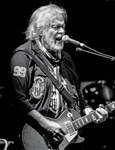
Before he found fame with the Guess Who and Bachman-Turner Overdrive (BTO), guitarist Randy Bachman cut his teeth playing in cover bands around his Canadian home town of Winnipeg. This was where his lifelong admiration of George Harrison crystallized.
“I was always the George Harrison guy in every band I was in,” Bachman says. “The drummers in those bands got to sing Ringo’s songs and I was always delegated to sing George’s songs.”
Many decades down the road, Bachman decided to relive that experience on his new album, By George, By Bachman, a collection of 11 songs written by George Harrison with one track, “Between Two Mountains,” that Bachman wrote as a tribute to the former Beatle, who passed away in 2001. Had he lived, Harrison would have turned 75 this year, and Bachman celebrates his own 75th birthday this September 27. So the timing seemed ideal to Bachman, who takes a very freehanded approach to Harrison’s compositions on the disc, departing markedly from the original chord progressions, melodies and grooves. But he feels that Harrison would have approved.
Source: Alan di Perna/guitarworld.com
